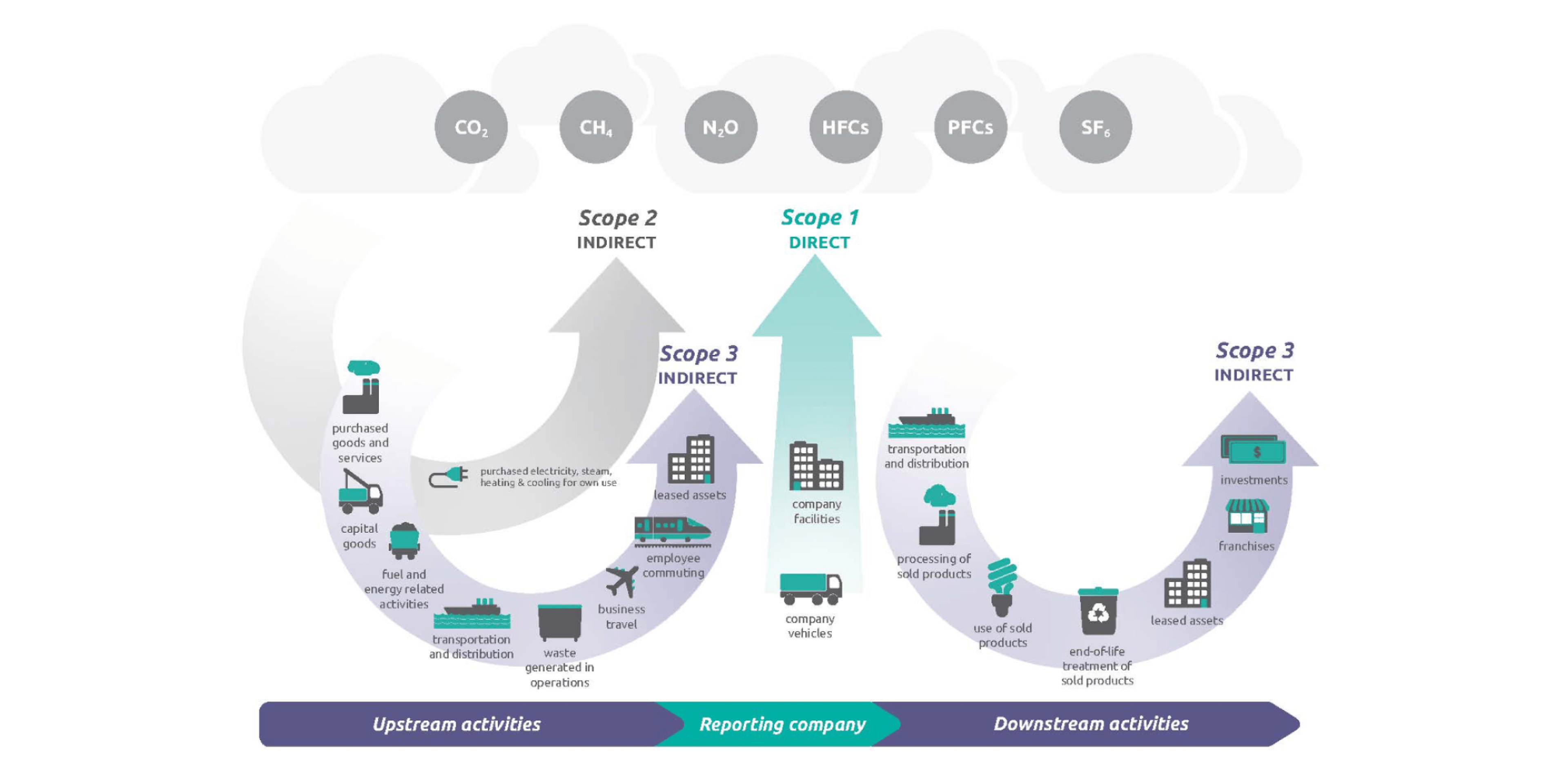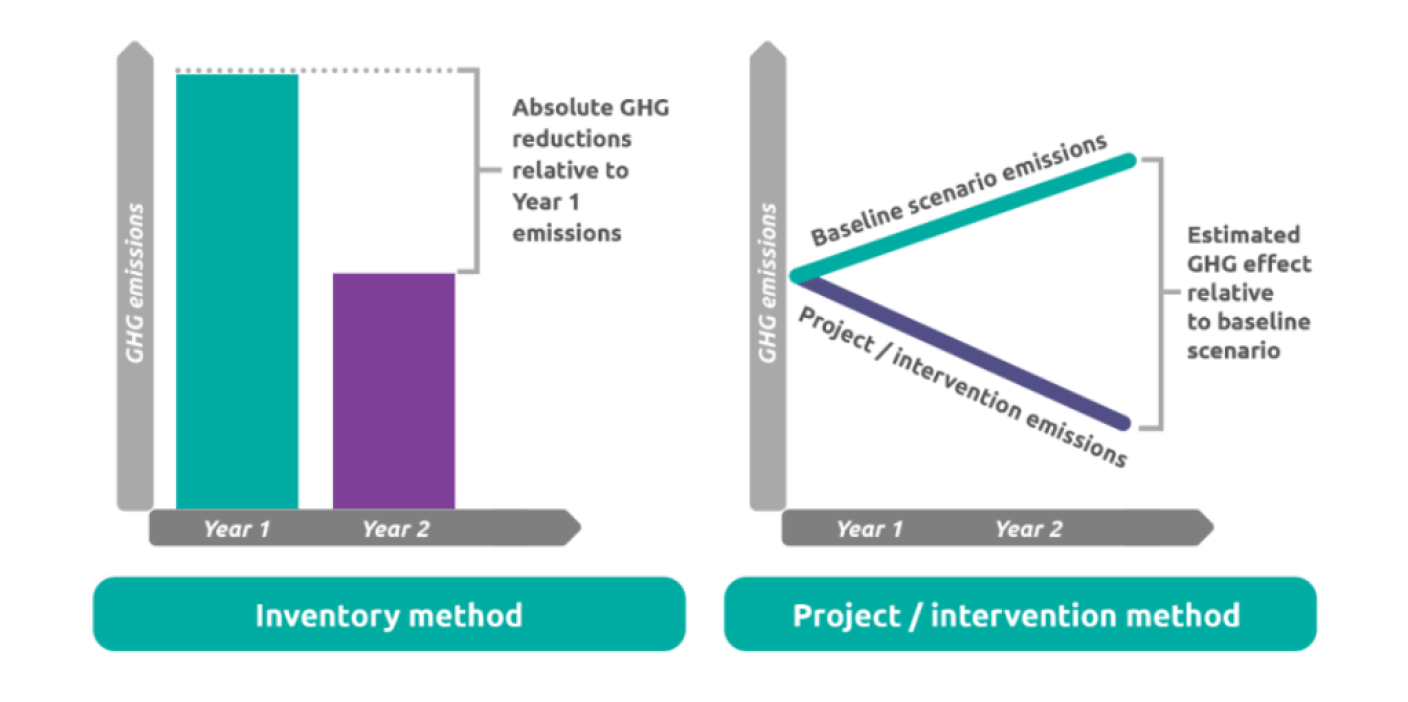Green House Gas Accounting

Specialized Areas
Organizational level
With the Paris Agreement target in force, global communities are intensifying efforts to track, monitor, and measure GHG emissions at all levels. This has led to a significant rise in demand for GHG accounting services, necessary for accurately calculating and monitoring emissions changes, and offsetting them in line with global standards and methodologies. Such efforts form the cornerstone for crafting and executing effective climate change mitigation policies and strategies.
GHG (Greenhouse Gas) accounting is essential across various sectors and areas to measure, manage, and mitigate emissions. It spans corporate operations, supply chain management, product life cycle assessment, transportation, building and infrastructure, agriculture, waste management, financial reporting, policy development, and carbon markets. GHG accounting informs decision-making, drives emission reductions, and supports global efforts to address climate change.
To address this demand, the GHG experts at the OLOLT Center offer comprehensive GHG accounting services designed for both organizational (Scope 1, 2, and 3) and project levels. Our services enable entities to accurately measure their emissions and implement effective strategies for reduction. We strictly adhere to the GHG Protocol, a widely recognized standard for GHG accounting. Additionally, we integrate country-specific emission factors where applicable to ensure precise estimation.
Sectors we cover:

Energy

Agriculture

Mining

Manufacturing

Transport

Construction

Waste

Forest
Organizational level
In contemporary business landscapes, the meticulous examination and management of greenhouse gas (GHG) emissions at the organizational level are indispensable for enterprises dedicated to environmental stewardship. This process entails comprehensive accounting of emissions originating from diverse sources within the organization’s operational framework.

Source: Corporate Value Chain (Scope 3) Accounting and Reporting Standard (2011)
These emissions are typically categorized into three distinct scopes: Scope 1, Scope 2, and Scope 3. Scope 1 encompasses direct emissions from sources directly owned or controlled by the organization, such as vehicles and equipment. Scope 2 involves indirect emissions stemming from purchased electricity or heat. Lastly, Scope 3 encompasses all other indirect emissions, including those arising from supply chains and employee commuting. By rigorously accounting for emissions across these scopes, organizations gain invaluable insights into their environmental footprint, facilitating informed decisions and strategic actions toward sustainability.
At the OLOLT Center, we assist national organizations in quantifying their GHG emissions. With our in-depth knowledge of national circumstances, specific features, and the wealth of available data, we provide valuable insight into the process. Our approach is multifaceted, involving meticulous steps such as defining the scope of their operations, meticulously collecting relevant data, conducting comprehensive analysis, and calculating emissions according to globally recognized standards like the GHG Protocol. Our expertise lies in not just providing numerical data but also offering actionable insights that empower organizations to take impactful measures towards emission reduction and fulfilling their environmental responsibilities. With our expert guidance, organizations gain the clarity and tools needed to navigate the complexities of emissions management and make tangible progress towards their sustainability goals.
Benefits of GHG accounting:
- Comprehensive Insight: Provides a holistic understanding of environmental impact across the entire value chain.
- Targeted Action: Identifies hotspots for focused emission reduction efforts and resource efficiency improvements.
- Informed Decisions: Enables data-driven decision-making to prioritize sustainability initiatives and investments.
- Risk Management: Helps mitigate risks associated with environmental regulations and changing consumer preferences.
- Stakeholder Trust: Builds trust with stakeholders through transparent reporting of emissions and environmental impacts.
- Cost Efficiency: Identifies cost-saving opportunities through optimized processes and reduced waste.
- Market Advantage: Enhances competitiveness by attracting environmentally conscious consumers and investors.
- Regulatory Compliance: Ensures compliance with environmental regulations and industry standards.
- Product Innovation: Informs sustainable product design and development for lower environmental impacts.
- Continuous Improvement: Facilitates tracking progress, setting emission reduction targets, and continuous improvement.
Project level
Project-level GHG accounting demands a meticulous approach, delving into every stage of a project’s lifecycle. This comprehensive process extends from the initial planning stages through construction, operation, maintenance, and eventual decommissioning. At each phase, precise measurement methodologies and calculation techniques are employed to quantify greenhouse gas emissions accurately. By scrutinizing every aspect of the project lifecycle, from inception to completion, organizations gain a detailed understanding of emissions profiles, enabling informed decision-making and the implementation of targeted emission reduction strategies.
Our expertise extends across all stages of the project lifecycle, from initial planning to decommissioning. Our team’s attention to detail and deep understanding of emission sources and measurement methods ensure accurate assessments and effective strategies for emission reduction throughout a project’s lifecycle.

Source: Draft Land Sector and Removals Guidance, GHG Protocol
Our expertise extends across all stages of the project lifecycle, from initial planning to decommissioning. Our team's attention to detail and deep understanding of emission sources and measurement methods ensure accurate assessments and effective strategies for emission reduction throughout a project's lifecycle.
Benefits of GHG accounting:
- Early Identification of Emission Sources: GHG accounting enables proactive mitigation measures by identifying emission sources early in the project lifecycle, reducing environmental impact.
- Cost Savings: By quantifying emissions and identifying areas for improvement, organizations can implement cost-effective measures, leading to potential savings and minimizing financial impact.
- Improved Planning and Decision-Making: GHG accounting provides valuable data for informed decision-making, helping prioritize sustainability goals and allocate resources efficiently, ultimately reducing negative environmental impact.
- Enhanced Stakeholder Engagement: Transparent reporting fosters trust among stakeholders, including investors and regulatory authorities, enhancing the organization's reputation and positive impact.
- Regulatory Compliance: GHG accounting ensures compliance with environmental regulations, reducing the risk of fines and penalties and promoting responsible environmental impact management.
- Demonstrating Environmental Leadership: Implementation of GHG accounting practices showcases commitment to sustainability, enhancing reputation and influencing positive environmental impact.
